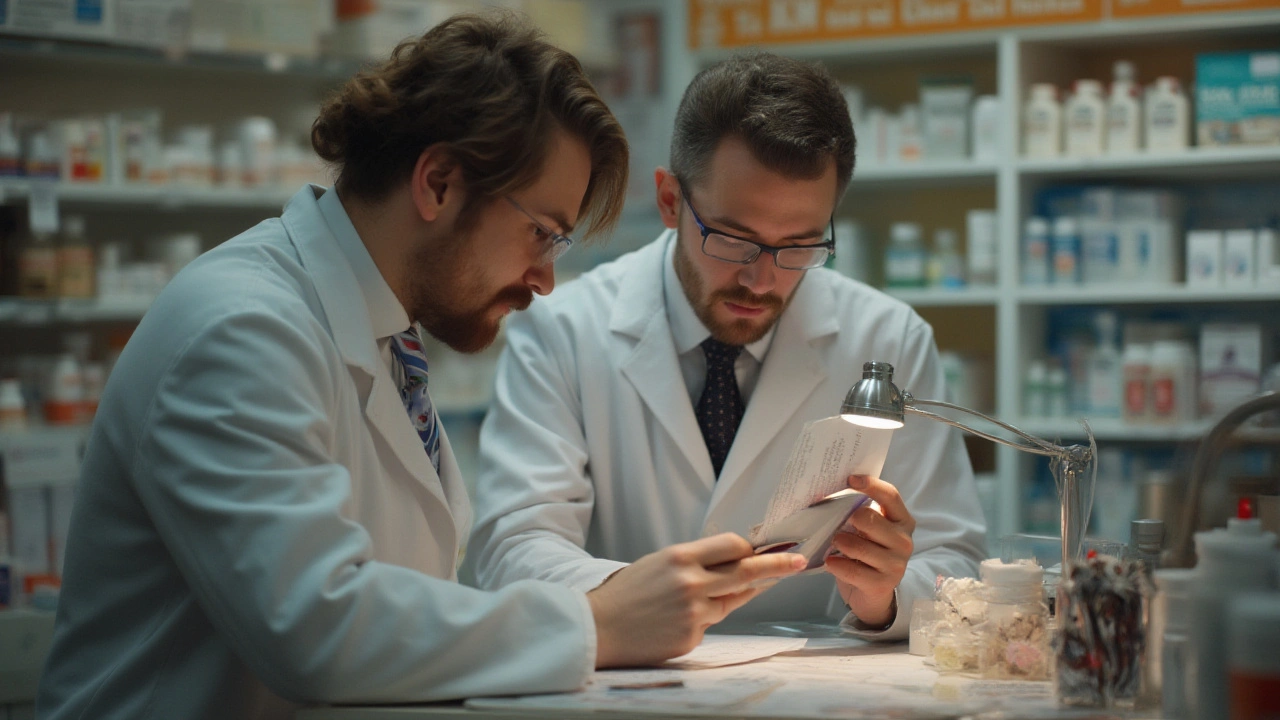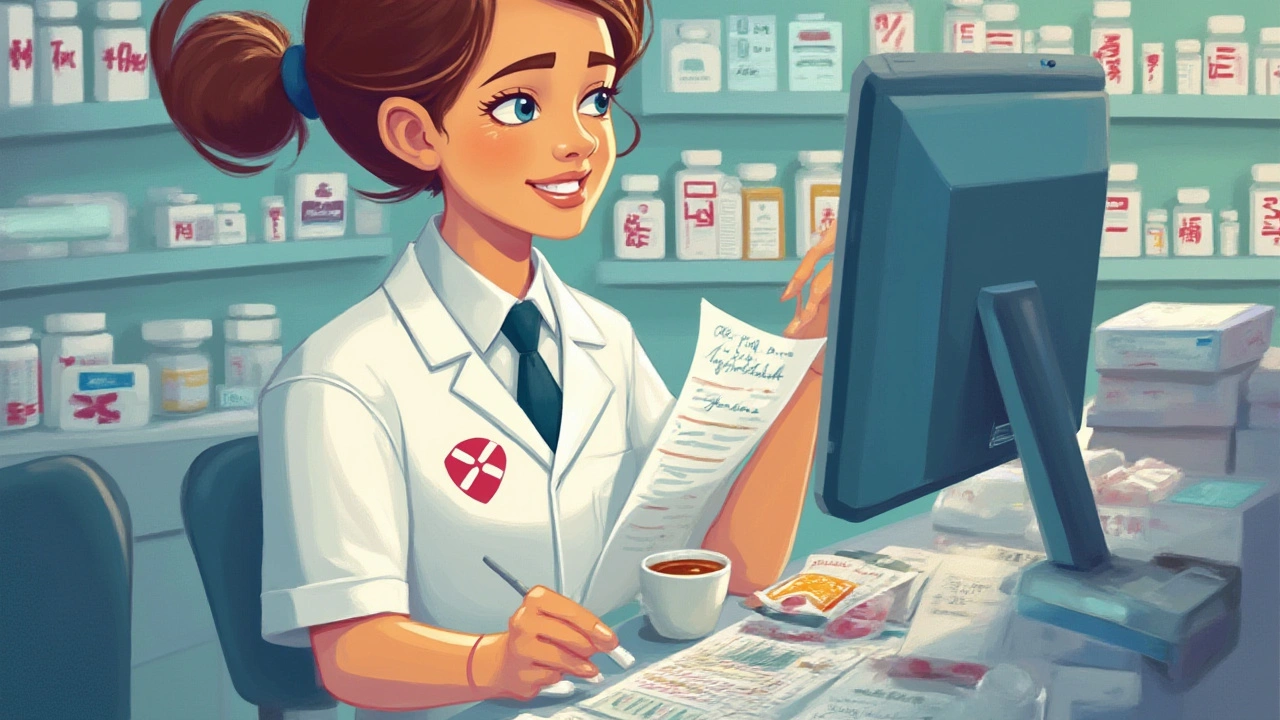
If you’ve ever glanced at a prescription and thought, “There’s no way anyone can read that,” you’re not alone. I’ve seen notes from doctors that look like they were written during an earthquake, and yet somehow pharmacists turn those cryptic lines into actual, safe medicine. It feels like a superpower, but really, there’s a blend of skill, experience, and a little bit of detective work. My dog, Whisky, has watched me stand at the pharmacy counter, squinting at scraps of paper, and still doesn’t get what all the fuss is about—but for people, getting the medication right is no joke. Read on as we dig into how pharmacists crack the prescription code and keep us all healthy and safe.
Prescription Jargon: Why Are Prescriptions So Hard to Read?
Prescriptions are often an indecipherable jumble to the average person. First, there’s the handwriting—doctors are famous for their quick, almost cryptic scrawls. This reputation goes back over a century, when handwritten notes were scribbled quickly during busy office hours, and with Latin abbreviations mixed in for good measure. Truth is, reading a prescription is like translating another language.
But pharmacists train for this. During their education, they get plenty of practice with hard-to-read scrawls and weird abbreviations. Latin phrases like “b.i.d.” (twice a day), “p.r.n.” (as needed), or “q.d.” (every day) show up constantly. Experienced pharmacists have lists in their heads of the most common drugs, milligram dosages, and abbreviations. They recognize patterns, like knowing that for high blood pressure “lisinopril 10mg” is a go-to, and that metformin is almost always for diabetes management.
Do you think doctors make it this hard on purpose? Nope. The reality is, time is tight, and old habits die hard. With 88% of prescriptions in the UK now issued electronically, this is slowly changing, but plenty of hand-written notes are still out there—especially from specialists or care homes who haven’t made the digital jump. Electronic prescriptions are clearer, but pharmacists can’t always bank on them, especially in rural areas or smaller GP surgeries.
There’s a reason for the secrecy too. By using specialized codes and abbreviations, doctors protect patient privacy. They also use Latin so the instructions stay standard across countries. But all of that adds a layer of difficulty for anyone who’s not in the know. Want to take a wild guess at what “1 tab t.i.d. po prn pain” means? To a pharmacist, it’s crystal clear: one tablet, three times daily by mouth, as needed for pain.
Here’s something wild: In a 2023 survey by the Royal Pharmaceutical Society, 70% of pharmacists said they rely daily on context clues, like the patient’s age and other prescriptions, to decode scribbled directions. It’s basically like being a medical detective. They’re not just reading words, they’re reading the situation.
From Scrawls to Safety: How Pharmacists Double-Check and Confirm
So how do they double-check that what they’re reading is correct, especially when patient safety is on the line? Pharmacists develop a system—call it their prescription “toolkit.” Here’s how it works in practice:
- Pattern Recognition: They know which drugs are most common for which conditions and look for the expected combinations. If an elderly patient gets prescribed amoxicillin, the pharmacist will check if they have any allergies or if the antibiotic could interact with their regular meds.
- Dosage Red Flags: Pharmacists are taught the usual safe doses for common medicines. If the dose looks off (like 10 tablets instead of 1), that’s a flashing warning sign to stop and double-check.
- Communication: They don’t hesitate to call doctors for clarification. Your prescription might get delayed by a quick phone call, but that extra step can save lives.
- Confirmation with the Patient: Whenever possible, a pharmacist will ask questions about why the medicine was prescribed and what else you’re taking. This backs up the accuracy of the doctor’s note—sometimes a casual question about symptoms can reveal a mistake that would otherwise slip by.
Pharmacies also use databases to flag allergies, drug interactions, or duplicate therapies. In the UK, for example, the NHS Summary Care Record (SCR) provides pharmacists with up-to-date details on patient allergies and medications. That extra data means a weird prescription can be compared against a patient’s history in seconds, not minutes.
Errors do happen, but pharmacy staff work as a team—one person reads, another double-checks, and if there’s a shadow of doubt, the note goes back to the prescriber. The General Pharmaceutical Council’s 2022 report showed that less than 0.1% of prescriptions dispensed in the UK led to harmful errors—an impressively low figure considering the hundreds of millions sent out every year.
To keep things even safer, many pharmacies use protocols that require a second pharmacist or technician to check each prescription before it’s handed out. That’s a big change from even a decade ago, where single-pharmacist operation was the norm and mistakes were more likely to slip through.
Peeking behind the scenes can be a bit mind-blowing. It isn’t just about reading penmanship—it’s about turning an often-chaotic note into something that keeps patients safe. Even my dog Whisky, who’s expert at nose work, would agree these folks are the real scent detectives of healthcare.

The Pharmacist’s Toolbox: Technology and Teamwork
Pharmacies today look a lot different from how they did even ten years ago. Technology is a huge help. Most GP surgeries are moving to e-prescribing. This means scripts zap across the internet and show up on a screen—no ink blotches, no mystery squiggles. The pharmacist reads it just like you’d read an email, and error rates drop drastically.
But even digital prescriptions aren’t foolproof. Doctors can, and do, still enter the wrong drug or dose into the system, so pharmacists have to keep their eyes peeled. They use software to scan for drug interactions, allergies, and double dosing. If the system flags a risk, the prescription can’t move forward until it’s rechecked.
| Year | Percentage of e-Prescriptions in UK |
|---|---|
| 2015 | 23% |
| 2019 | 67% |
| 2023 | 88% |
Technicians and assistants are essential, too. They handle the day-to-day tasks like measuring out medicines, setting up the blister packs, handling repeat orders, and making sure everything’s double-checked. Pharmacists can focus on their detective work because they’ve got a strong support network.
- Tip: If you’re worried about your doctor’s writing, just ask for them to verbally confirm the drug and dosage. Not only will you understand your meds better, but you’ll help catch any slip-ups that might happen as it moves through the pharmacy.
- Did you know? Some pharmacists actually take elective coursework just on medical handwriting and common prescription mistakes to sharpen their translation skills. It’s a niche superpower, but highly prized.
Patients aren’t just passive onlookers, either. Keeping a personal medication record or using a medication app can help spot errors before they have a chance to cause harm. Pharmacists often recommend these to people with many prescriptions or complicated health needs.
Electronic health records, barcoding on pill bottles, and national “medicines reconciliation” initiatives make it harder for errors to slip through. Everyone involved—patients, doctors, pharmacists, and technicians—has a piece of the puzzle. The more links in the chain, the safer you are.
Troubleshooting the Process: What Happens When Things Go Wrong
No system is perfect. Even with tech upgrades and detailed double-checks, mistakes sometimes slip through. Here’s a peek into what happens when things don’t go according to plan—and how pharmacists jump into action.
If the prescription is truly unreadable, or if the dosage looks dangerously off, the pharmacist goes straight to the prescriber to clarify. There’s no guessing or “hoping for the best.” In most UK pharmacies, it’s protocol to never dispense unless you’re 100% sure. This might mean a longer wait, but it’s a whole lot better than getting the wrong meds. Most patients appreciate the caution, perhaps more so after they’ve talked with friends who’ve had a close call elsewhere.
On rare occasions, pharmacists catch prescription fraud. Maybe someone tries to tamper with the numbers, or change a drug name. Pharmacy teams are trained to spot these tricks, whether it’s bad white-out or “adjusted” handwriting. They’ll quietly involve the prescriber or, when needed, the police. These cases are rare—just a tiny fraction of the millions of scripts filled each year.
Occasionally, a pharmacist will face conflicts with prescribers who get frustrated at being called for clarification. But the rules are strict: pharmacist judgment is the last word before medication leaves the pharmacy. The goal isn’t to accuse anyone, but to double-check since mistakes—human or computer—do happen.
There’s also a human side to error prevention: if you’re ever unsure about your medication, speak up. Pharmacists would much rather answer “silly” questions than correct a dangerous mistake later. I once had a neighbor whose cat was prescribed a liquid medicine meant for a child—because two names got mixed. It took asking questions to spot the error and fix it before any harm was done. Walking back from the pharmacy that day, I gave Whisky a treat and thought, “Sometimes, a little caution really pays off.”
When mistakes are caught, pharmacies log every near-miss and error in national reporting systems. That data is used to tighten safeguards and update training, making it less likely the problem will happen again. The UK National Reporting and Learning System collects hundreds of thousands of incident reports from pharmacies every year—and the number of serious prescription errors has dropped by over 15% in the last decade because of these efforts.
The job isn’t just about passing out pills. It’s about sifting through errors, thinking like a detective, and using every tool—brains, computers, or teamwork—to get the job done right. Whether wrangling messy scripts or handling the latest batch of digital paperwork, pharmacists never take shortcuts when health is on the line.
So next time you’re waiting for your prescription and wondering why it’s taking so long, remember: behind the counter, there’s a full-blown, high-stakes investigation happening to make sure your medicine is exactly what you need—safe, accurate, and just as the doctor ordered.
